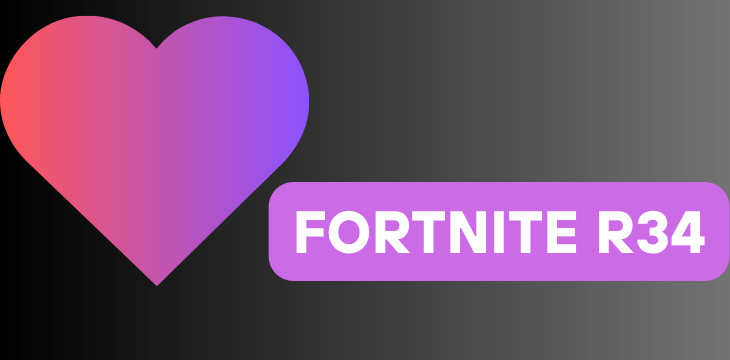Fortnite has taken the gaming world by storm, captivating millions with its vibrant graphics and engaging gameplay. But beneath the surface of this colorful battle royale lies a more controversial aspect that many players are curious about: Fortnite R34. If you’ve stumbled upon this term in your online travels, you might be wondering what it means and why it’s become a hot topic among fans and gamers alike. From fan art to memes, R34 culture intertwines creativity with a dash of rebellion, sparking debates across communities. Join us as we dive into the intriguing world of Fortnite R34, exploring its history, popularity, controversies, and impact on both players and developers.
What is Fortnite R34?
Fortnite R34 refers to a specific subset of fan-created content that is often explicit in nature. The term “R34” itself originates from internet slang, denoting the idea that if something exists, there is adult-oriented art or material related to it.
In the context of Fortnite, this means various artistic interpretations featuring characters and elements from the game in a more mature light. Artists might create everything from suggestive illustrations to fully-fledged narratives that explore relationships within the game’s universe.
This phenomenon thrives on platforms like DeviantArt and Tumblr, where users share their creations with others who appreciate this unconventional portrayal. While some embrace it as an expression of creativity, others view it as controversial due to its explicit nature and possible implications for younger audiences who are also part of Fortnite’s player base.
The History of R34 Culture in the Gaming World
R34, short for Rule 34, emerged as a cultural phenomenon in the early days of internet forums. It posits that if something exists, there’s likely adult content related to it. This concept quickly seeped into various fandoms, including gaming.
As video games gained popularity, so did fandoms surrounding them. Characters became muses for artists and writers who explored this risqué territory. Platforms like DeviantArt and Tumblr fueled creativity by providing spaces for sharing such content.
In the gaming realm, titles with rich lore and vibrant characters saw significant R34 activity. Games like “World of Warcraft” paved the way for players to express their interpretations through adult-themed artwork.
Fortnite entered this landscape with its distinct characters and cult following. Fans began blending gameplay culture with R34 elements almost immediately after its release. The combination was explosive and marked a new chapter in both Fortnite’s legacy and R34 history alike.
Why is it Popular Among Players and Fans?
Fortnite R34 has captivated a niche audience for various reasons. The game’s vibrant graphics and diverse character designs lend themselves well to creative reinterpretation. Players often enjoy exploring alternative portrayals of their favorite characters.
The allure also lies in the freedom of expression that art provides. Fans can showcase their skills while engaging with a community that appreciates such creativity. This shared interest fosters camaraderie among players who appreciate not just gameplay, but the culture surrounding it.
Additionally, there’s an element of rebellion tied to R34 content. It challenges conventional norms within gaming communities, pushing boundaries and sparking conversations about sexuality and representation.
As more people engage with Fortnite’s universe, this subculture continues to flourish, attracting those drawn by curiosity or simply the thrill of discovery amidst pixels and imagination.
Controversies Surrounding R34 Content
R34 content often ignites fierce debates among gamers and the broader community. The sexualization of characters, especially those from a game like Fortnite, raises eyebrows. Critics argue it undermines the game’s family-friendly image.
Many worry about the implications for younger audiences. With Fortnite’s popularity among children and teens, R34 material can be seen as crossing a line. Parents may feel concerned that such content is easily accessible online.
On platforms where R34 thrives, issues of censorship frequently emerge. Some advocates argue for freedom of expression while others demand stricter controls to protect vulnerable viewers.
Additionally, creators face backlash from both sides—those who champion artistic freedom and those who insist on maintaining integrity within gaming culture. This ongoing tug-of-war makes R34 a polarizing topic in discussions surrounding modern gaming trends.
Impact on the Gaming Community
The emergence of Fortnite R34 has undeniably influenced the gaming community in various ways. Players often find themselves torn between their love for the game and the provocative fan creations that circulate online.
Some see it as a means of expression, pushing the boundaries of fandom to new heights. Artists showcase their skills, while fans engage with content that sparks heated discussions within forums and social media platforms.
However, not everyone views this phenomenon positively. Many argue that such content can overshadow genuine gameplay experiences. This tension creates a rift among players who either embrace or reject this aspect of gaming culture.
Moreover, it raises questions about community values and acceptable expressions within digital spaces. The presence of R34 content forces gamers to confront issues surrounding consent, representation, and artistic freedom in an ever-evolving landscape.
How Developers Responded to R34 Culture
Developers have taken varied stances on the emergence of Fortnite R34 content. Some choose to ignore it, focusing instead on creating an engaging game experience for all players. This hands-off approach allows the community to explore their interests without interference.
Others have voiced concerns. They worry that explicit content associated with popular characters could tarnish the game’s family-friendly image. Statements from Epic Games reflect a desire to maintain a safe environment for its younger demographic.
Furthermore, there are instances where developers actively monitor and remove inappropriate fan creations through digital rights management tools. This illustrates a commitment to upholding community standards while navigating complex artistic expressions.
While some creators embrace this cultural curiosity, others remain cautious, recognizing the potential pitfalls of mixing gaming with mature themes. The balance between creative freedom and brand integrity continues to shape how developers respond in this evolving landscape.
Conclusion: Future of R34 in the Gaming Industry
The landscape of R34 content in gaming continues to evolve. As players delve deeper into their favorite titles, the intersection of creativity and community engagement becomes increasingly complex. Fortnite, with its vibrant universe and diverse characters, has become a canvas for artistic expression ranging from harmless fan art to more suggestive interpretations.
As the conversation around R34 culture grows, so does awareness within development teams. Game creators are now tasked with navigating these waters carefully. While some might embrace this form of expression as part of fandom culture, others may approach it cautiously due to potential backlash.
Moving forward, we can expect ongoing discussions about boundaries and responsibilities in digital spaces. The rise of platforms that support user-generated content will likely influence how R34 manifests in the gaming industry too. It’s clear that while there are challenges ahead regarding morality and appropriateness, there’s also an opportunity for dialogue between developers and fans.
How Fortnite R34 shapes the future depends on evolving attitudes towards both creative freedom and community standards within gaming culture. As long as players continue exploring their passions through pixels, there’s no telling where this journey will lead next.

